Effect of inflammatory response on in vivo competition between two chlamydial variants in the guinea pig model of inclusion conjunctivitis
- PMID: 22144478
- PMCID: PMC3264299
- DOI: 10.1128/IAI.06054-11
Effect of inflammatory response on in vivo competition between two chlamydial variants in the guinea pig model of inclusion conjunctivitis
Abstract
In order to study the interaction of variants in in vivo infection, we employed an azithromycin-resistant mutant (AZ(2)) and its wild-type parent (SP(6)) in the guinea pig model of Chlamydia caviae conjunctival infection. When each strain was inoculated individually into conjunctiva, both attained the same level of growth, but AZ(2) elicited less pathology. However, when equal numbers of the two strains were inoculated together into the guinea pig conjunctiva, SP(6) produced a significantly greater number of inclusion-forming units than AZ(2), and the pathology reflected that of a SP(6) monoinfection. The goal of this study was to further characterize the dynamics of concomitant infection of these two distinct variants, with particular emphasis on the impact of the host response on the in vivo growth of each organism and the development of pathology. Animals infected with AZ(2) had reduced conjunctival infiltration with CD45(+) cells and neutrophils as well as a reduced interleukin-8 (IL-8) response. Gene expression of gamma interferon (IFN-γ), tumor necrosis factor alpha (TNF-α), CCL2, and CCL5 was also significantly lower in AZ(2)-infected animals. The lower inflammatory response induced by AZ(2) was associated with its decreased ability to activate NF-κB via Toll-like receptor 2 (TLR2). In general, the inflammatory response in animals infected with both variants was greater than in infection with AZ(2) alone, resulting in lower numbers of AZ(2) than those of SP(6) in the mixed infection. Our results suggest that the ability to elicit an inflammatory response is an important factor in the dynamics of mixed infection with strains that display different pathological phenotypes.
Figures
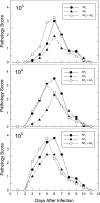
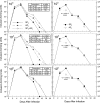
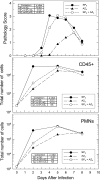
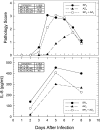
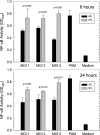
References
-
- Darville T, et al. 2003. Toll-like receptor-2, but not toll-like receptor-4, is essential for development of oviduct pathology in chlamydial genital tract infection. J. Immunol. 171:6187–6197 - PubMed
-
- Kari L, et al. 2008. Pathogenic diversity among Chlamydia trachomatis ocular strains in nonhuman primates is affected by subtle genomic variations. J. Infect. Dis. 197:449–456 - PubMed
Publication types
MeSH terms
Substances
Grants and funding
LinkOut - more resources
Full Text Sources
Medical
Research Materials
Miscellaneous

